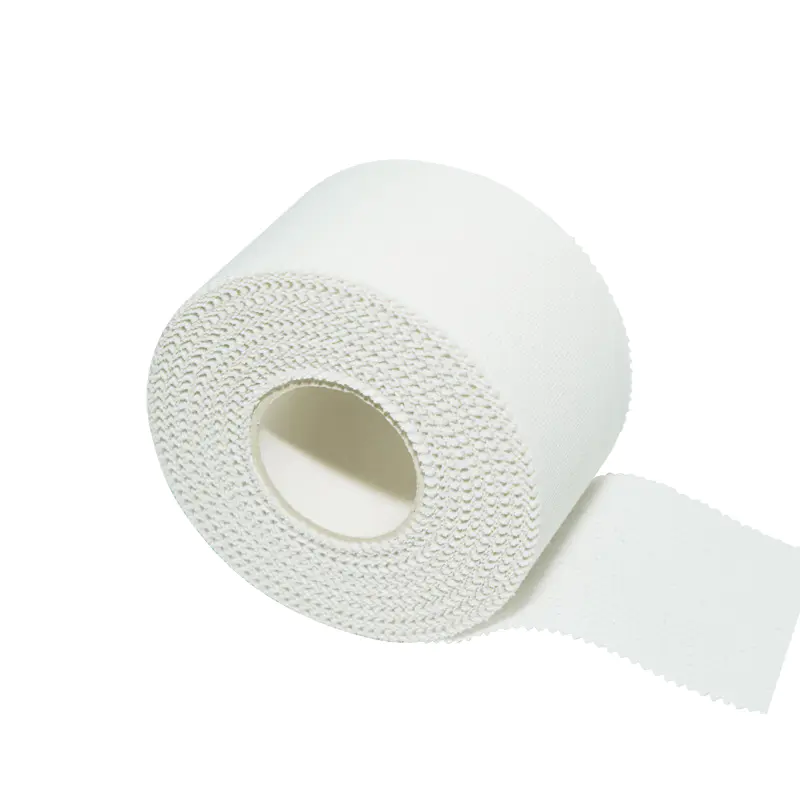When it comes to addressing musculoskeletal injuries, managing chronic conditions, or aiding in post-operative recovery, one product consistently rises to the occasion: the heavy elastic adhesive bandage. Combining strength, flexibility, and user-friendly design, this unassuming yet powerful tool has become a cornerstone of effective patient care. But what exactly makes these bandages so special, and why do they continue to dominate the market?
Balancing Durability with Comfort
At its core, a heavy elastic adhesive bandage is engineered to strike the perfect balance between durability and comfort. Its robust construction ensures it can withstand significant stress—whether it's supporting a strained ligament during a marathon or holding a dressing in place through multiple days of wear. Yet, despite its toughness, the bandage remains gentle on the skin, thanks to advanced adhesive technologies that minimize irritation and allergic reactions.
The elasticity of these bandages is another key factor in their success. Unlike rigid alternatives, which can restrict movement and impede recovery, heavy elastic adhesive bandages adapt to the natural motion of the body. This not only enhances patient comfort but also promotes faster healing by allowing muscles and joints to function more freely.
A Solution for Every Scenario
One of the most compelling aspects of heavy elastic adhesive bandages is their versatility. They excel in scenarios ranging from acute trauma management to long-term therapeutic support. For instance, in emergency care, they are invaluable for stabilizing fractures or controlling bleeding until more definitive treatment can be administered. In rehabilitation settings, they serve as part of structured therapy plans, helping patients regain mobility safely and effectively.
Chronic conditions such as osteoarthritis and plantar fasciitis also benefit greatly from the targeted compression provided by these bandages. By reducing inflammation and providing structural support, they alleviate pain and improve functionality, enabling patients to maintain active lifestyles.
Moreover, heavy elastic adhesive bandages are increasingly being adopted in specialized fields such as lymphedema management. Here, their ability to apply graduated compression helps reduce fluid buildup and improve circulation, offering relief to sufferers of this challenging condition.

User-Centric Innovations
Manufacturers are continually refining heavy elastic adhesive bandages to better meet the needs of users. Recent developments include eco-friendly materials that reduce environmental impact without compromising performance. Others focus on enhancing breathability, using micro-perforated designs that allow air to circulate and prevent overheating—a common issue with less sophisticated products.
Another exciting trend is the integration of smart technology. Some companies are exploring ways to embed sensors within bandages to monitor vital signs or track healing progress in real-time. While still in experimental stages, these innovations could revolutionize how we approach injury management and recovery monitoring.
Why Healthcare Providers Trust Them
Healthcare providers trust heavy elastic adhesive bandages because they deliver consistent results. Their reliability reduces the burden on medical staff, who no longer need to worry about frequent readjustments or replacements. Patients, too, appreciate the peace of mind that comes from knowing their bandage will stay put, regardless of activity level or environmental conditions.
Furthermore, the cost-effectiveness of these bandages cannot be overstated. By minimizing waste and maximizing utility, they represent a prudent investment for healthcare facilities operating under tight budgets. Their widespread availability also ensures that even remote or underserved communities can access high-quality wound care and injury management solutions.







